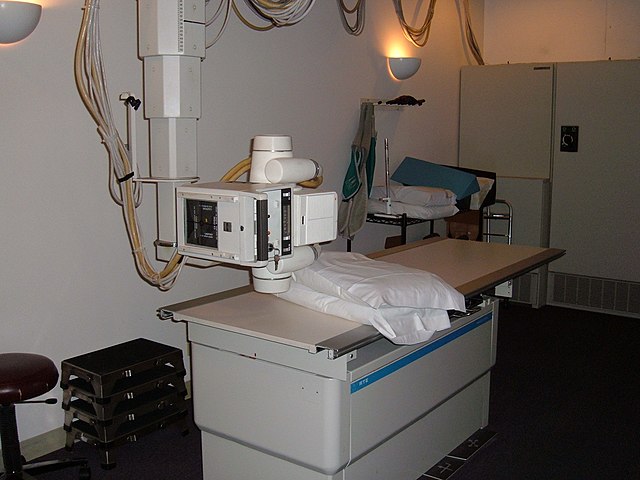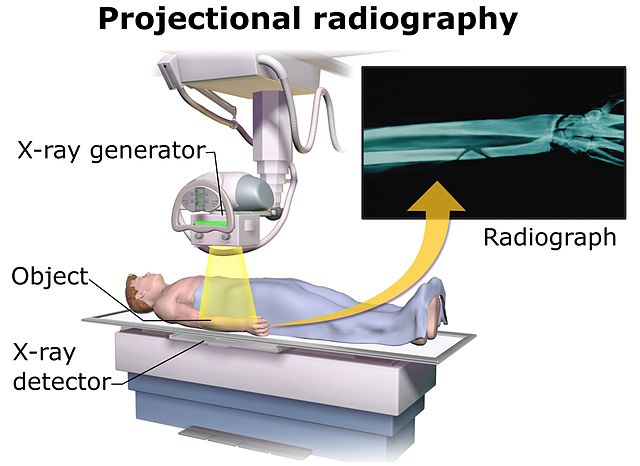An X-ray machine is a device that uses X-rays for a variety of applications including medicine, X-ray fluorescence, electronic assembly inspection, and measurement of material thickness in manufacturing operations. In medical applications, X-ray machines are used by radiographers to acquire x-ray images of the internal structures of living organisms, and also in sterilization.
A radiology room table. The X-ray housing is turned by 90° for a chest radiograph
XR150 - portable pulsed X-ray battery powered X-ray generator used in security.
Acquisition of projectional radiography, with an X-ray generator and a detector.
Mobile fluoroscopy units can produce images continuously.
X-ray fluorescence (XRF) is the emission of characteristic "secondary" X-rays from a material that has been excited by being bombarded with high-energy X-rays or gamma rays. The phenomenon is widely used for elemental analysis and chemical analysis, particularly in the investigation of metals, glass, ceramics and building materials, and for research in geochemistry, forensic science, archaeology and art objects such as paintings.
A Philips PW1606 X-ray fluorescence spectrometer with automated sample feed in a cement plant quality control laboratory
A Helmut Fischer(company) X-ray fluorescence spectrometer which are used to check for metals coating thickness and any of potential contamination of unapproved RoHS materials
Figure 2: Typical wavelength dispersive XRF spectrum
Figure 3: Spectrum of a rhodium target tube operated at 60 kV, showing continuous spectrum and K lines








